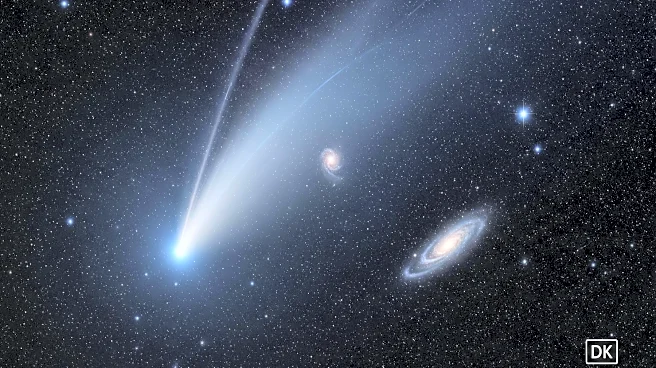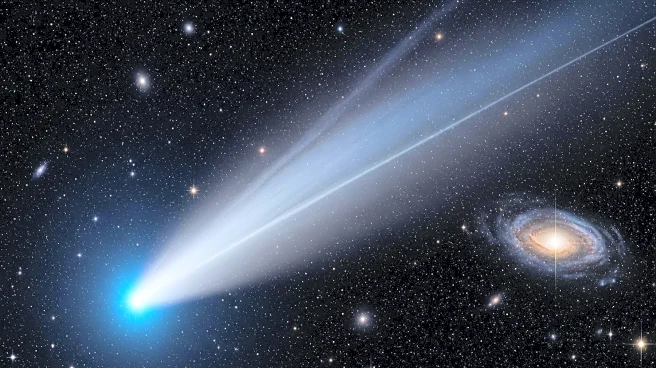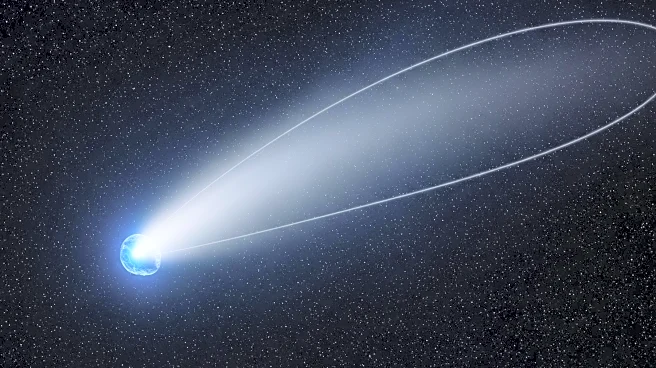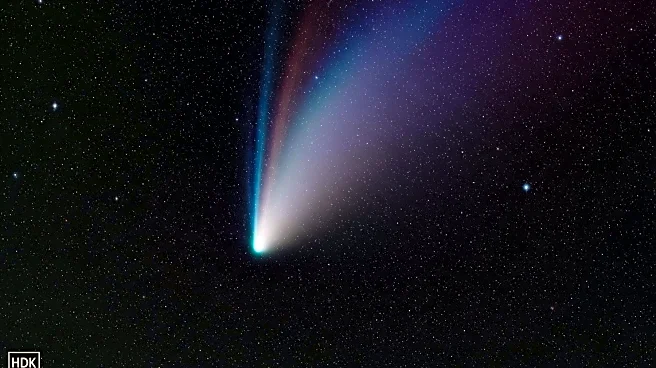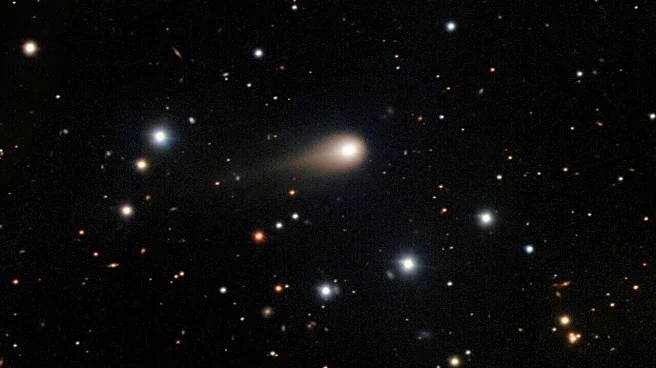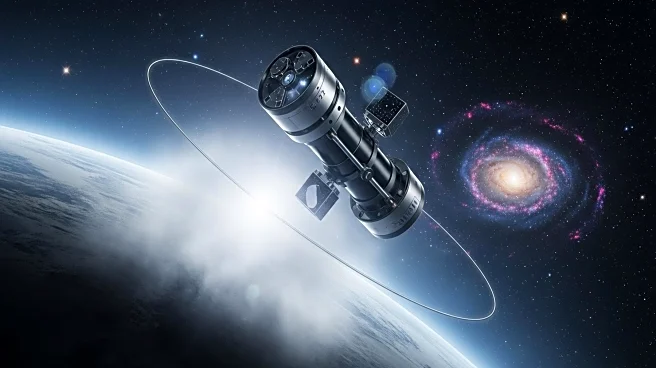What's Happening?
The interstellar comet 3I-Atlas is becoming more active as it travels through the solar system, developing a tail of dust and gas. Currently 238 million miles from Earth, the comet is expected to pass the sun in October and approach Earth until December, with its closest distance being 167 million miles. This comet is only the third interstellar object identified in our solar system, monitored by the National Science Foundation's NoirLab using the Gemini South telescope in Chile.
Why It's Important?
The observation of interstellar comets like 3I-Atlas provides valuable information about objects originating outside our solar system, offering insights into their composition and behavior. This can enhance our understanding of the universe and the processes governing celestial bodies. The comet's trajectory and activity are of interest to scientists and astronomers, contributing to ongoing research in space exploration and astrophysics.
What's Next?
Scientists will continue to monitor 3I-Atlas as it approaches the sun and Earth, analyzing its tail and other characteristics. This could lead to new discoveries about interstellar objects and their interactions with our solar system. Public interest in such celestial events may also increase, promoting educational opportunities and engagement with space science.
